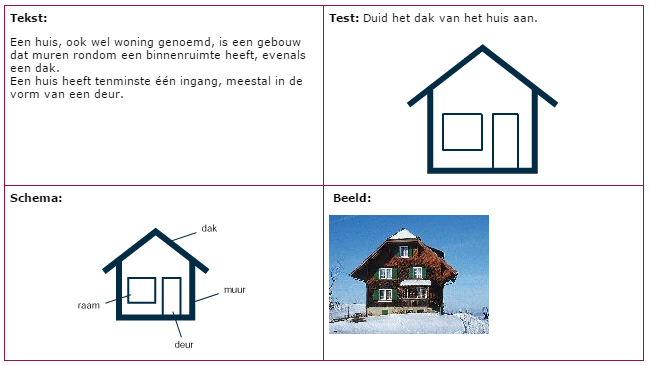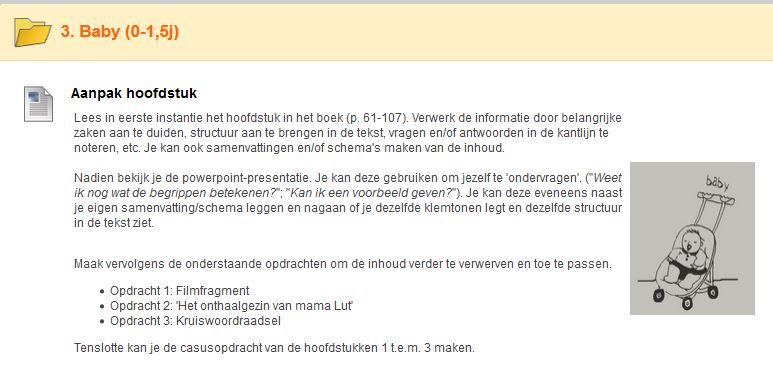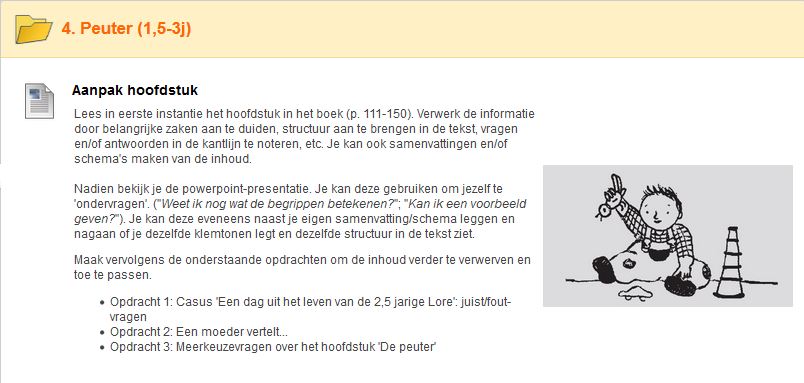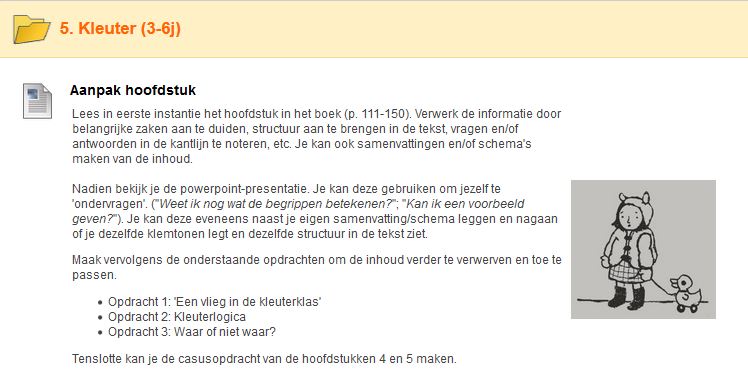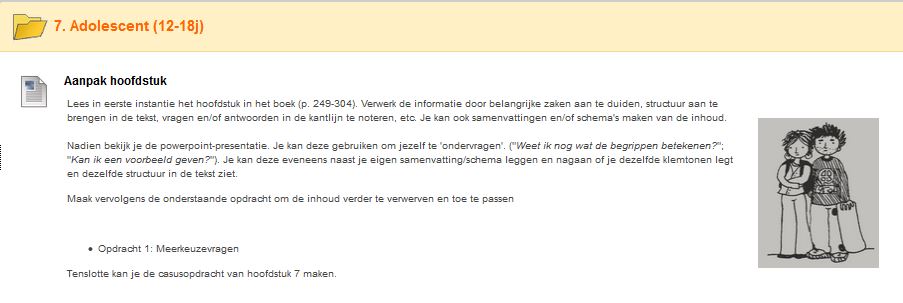Structure and scenario
We design e-learning content using a structure and a scenario. The structure is the stepping stone for the learning content later on. The scenario refers to the story, the way you present the learning content.
Structure = content divided into smaller units and structured into a tree diagram
Scenario = integrate various exercises (texts, images, animation, interaction, exercises)
Structure
Teaching methods with digital support … are built in.
For example, by initiating a chapter with a knowledge test, and by indicating in the feedback what follows, the student can have a look at the different parts in a structured way.
A didactically sound structure must ensure that each student is stimulated enough to bring the provided trajectory to a successful conclusion:
Scenario: varied repetition
Create a thriving and friendly story. Introduce each part of the structure, so each piece of content, by using a variety of repetitions. Include multiple learning styles: (inter) active experience, observing, reflecting, conceptualizing, experimenting, applying.
In practice, apply these different learning styles through the use of texts, schedules, stories, images, sounds, videos, animations, simulations, series of tests, interactive animations, exercises, etc.
